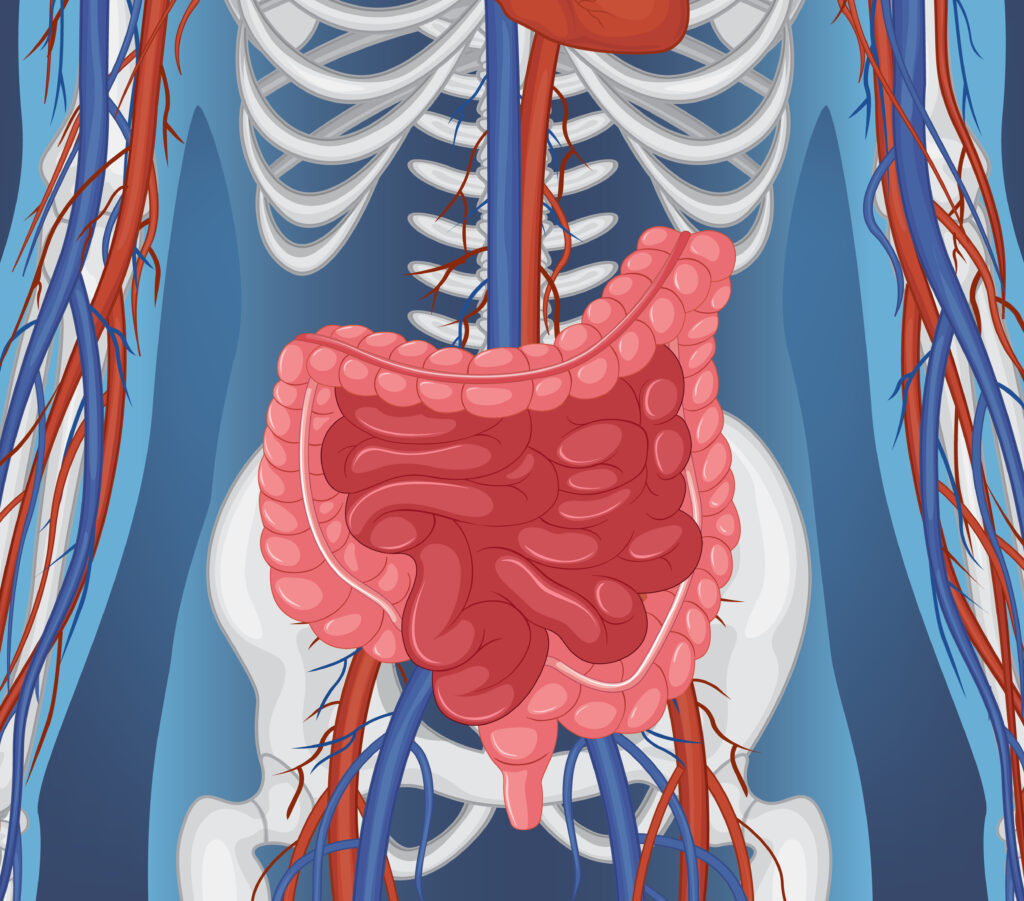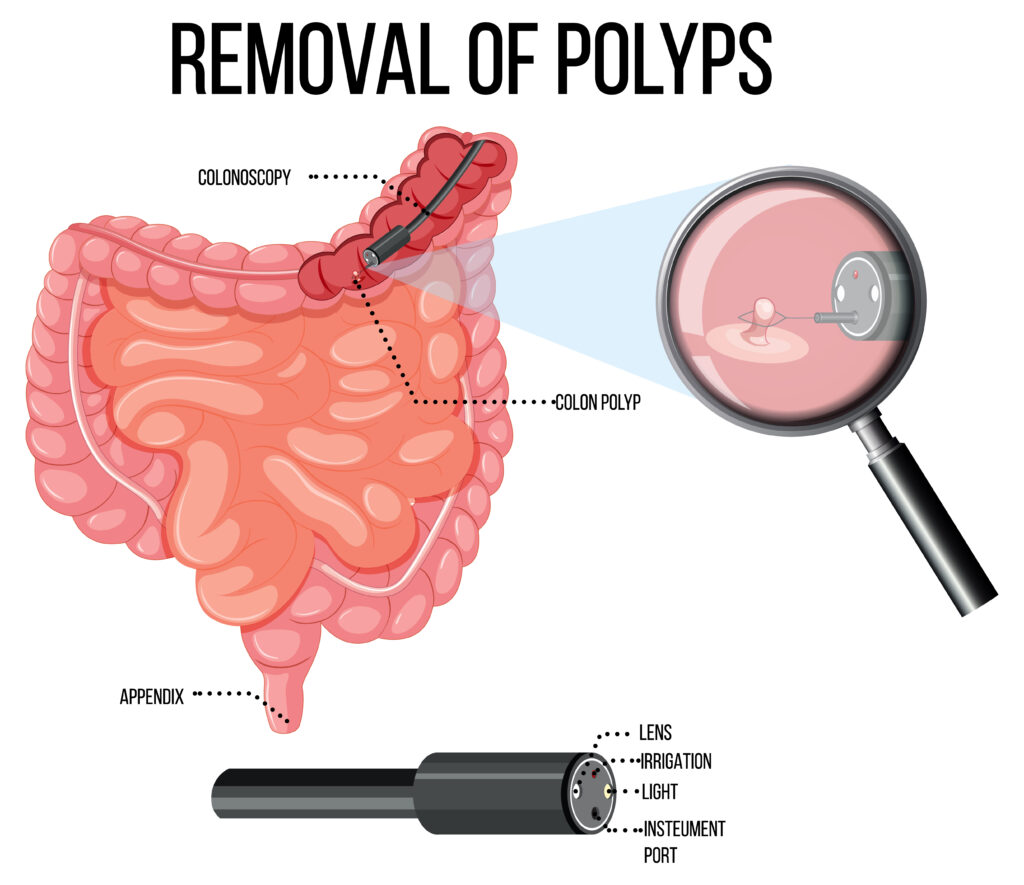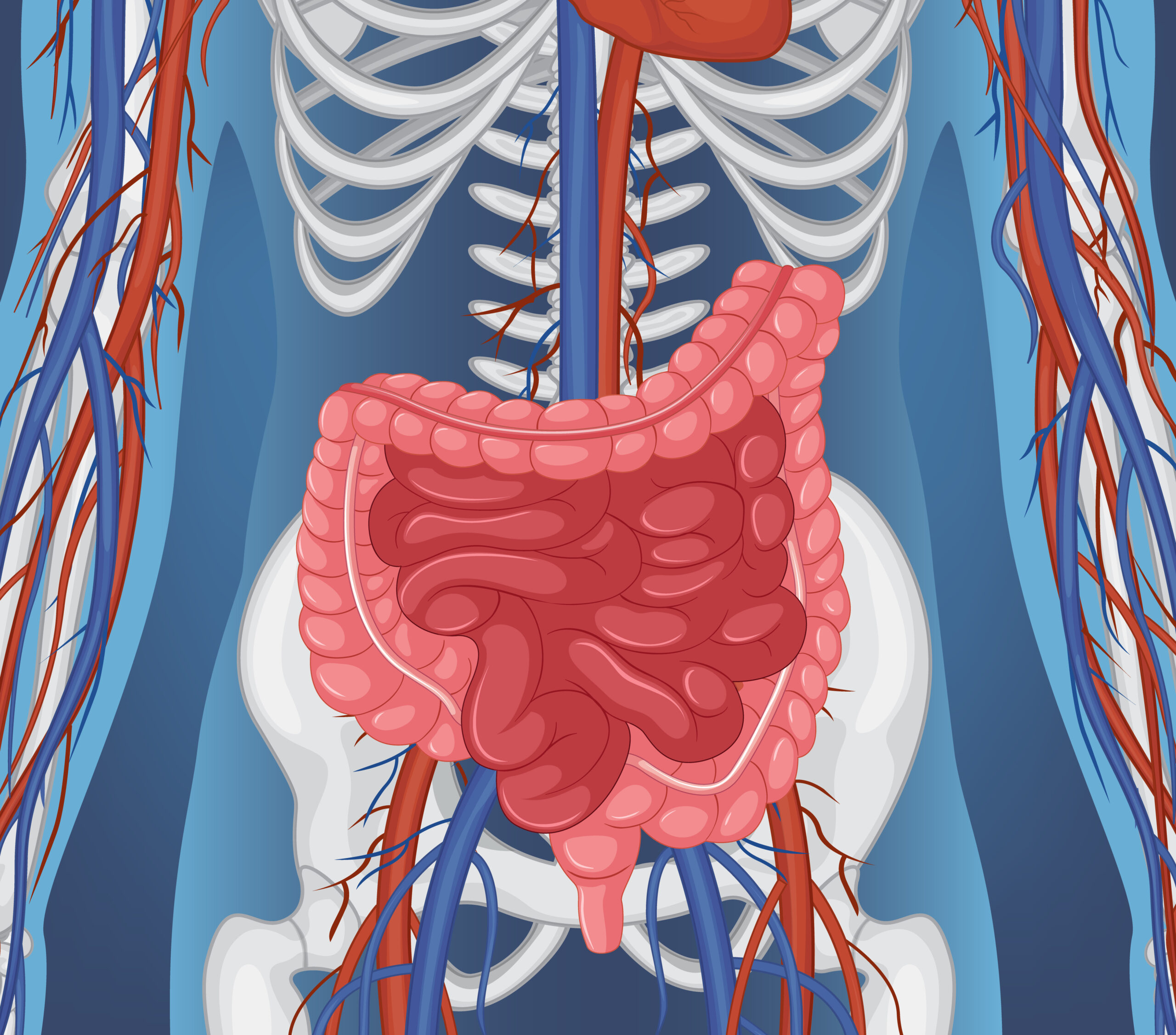Colonic polyp can be defined as abnormal growths in the form of a small clump of cells. Those arise from the lining epithelium of the large intestine which includes both the colon and rectum. Polyps can be defined as one of the commonest conditions that affect about 20% of the adult population and most of those polyps are harmless. But some of these polyps can grow into colorectal cancers which is a dangerous aspect of having polyps.

Types of Colonic Polyp
Colonic polyps can occur in various sizes and shapes. They can be classified as below.
- Sessile polyps– these polyps look like bumps
- Pedunculate polyps – these polyps are raised and look like mushrooms or cauliflowers on short stalks
Also, there are benign polyps which are not cancerous and malignant polyps which are cancerous. In below classification shows three types of polyps as adenomatous polyps which are very common.
- Gland-like growths that develop on the mucous membrane that lines the colon,
- Hyper-plastic polyps are the other type that is uncommon and less likely to develop into cancerous forms.
- adenocarcinomas are Adenomatous polyps that can transform into cancers and they are called. Also, polyps that are bigger than 1cm have a higher cancer risk than polyps that are smaller than 1 cm.
Risk Factors
- Aging can make you predisposed to get polyps and especially if you are older than 45 years
- Having a blood relative who has had colonic polyps or colonic cancer
- Having inflammatory conditions in the gastrointestinal tract such as ulcerative colitis or Crohn’s disease
- Smoking and alcohol consumption in an excessive manner
- Low-fiber and high-fat diet
- American race
- Lack of regular exercise and a sedentary lifestyle
- Obesity
- People who are having hereditary polyp disorders such as Lynch syndrome, Familial adenomatous polyposis, Gardner syndrome, and Peutz-Jeghers syndrome are at higher risk of developing colonic cancers from colonic polyps.
- A history of previous episodes of having colonic polyps.
- Diabetes mellitus
Causes for Colonic Polyp
Although the exact cause of developing polyps is not yet identified, changes in certain genetics can cause the continued growth of cells generating polyps.
Clinical Features of Colonic Polyp
- Most of the patients with polyps present without any symptoms and they are diagnosed incidentally during other examinations.
- Some patients with polyps can be presented with the below symptoms,
- Changes in bowel habits including constipation or diarrhea that lasts longer than a week may suggest large polyps.
- Change in color of stools including red streaks in stools or black color stools.
- Due to long-term bleeding from polyps, without being visible in stools, iron deficiency anemia can occur which can present with fatigue, shortness of breath, and paleness.
- Crampy abdominal pain due to blockage of a part of your large colon by a polyp.
- Per rectal bleeding and mucous discharge.
- A feeling of a mass protruding from the anus.
Diagnosis of Colonic Polyp
- First, the doctor will ask specific questions regarding the history of your presentation to identify any risk factors. Next, the doctor will do a few specific investigations for diagnostic purposes.
- Digital rectal examination and flexible sigmoidoscopy are two investigations that can be used for diagnosis.
- A colonoscopy is used to look at the colonic lining directly and to remove anything that looks suspicious for a polyp.
Treatment for Colonic Polyp
- Colonoscopy or Flexible Sigmoidoscopy – In this treatment polyps will be removed. These methods are applicable for only early-stage colonic polyps and for small polyps. Which is a very easy procedure.
- Open Abdominal Surgery – This method is for larger polyps that can’t remove by colonoscopy or flexible sigmoidoscopy.
- Trans-anal excision – If the polyps are situated in the lower part of the rectum, then doctors will follow this procedure to remove the polyps. Although they are removed there is a high risk for polyps to develop again during the lifetime.

Prevention and Lifestyle Modifications
- Regular screening is very important for people who are at high risk of developing polyps which should be done through colonoscopy or flexible sigmoidoscopy regularly.
- Having a Healthy diet that includes plenty of fruits, vegetables and whole green consisting of vitamins and all other essential nutrients is important.
- Limit consumption of red meat, processed meat, and food that are rich in fat.
- Limiting alcohol intake and quitting all thee smoking habits is also good health habit that can prevent the occurrence of colonic polyps.
- Engaging in regular physical exercises for at least 30 minutes a day while maintaining a healthy weight with a good BMI.
- Some studies have shown that increased intake of calcium and vitamin D also reduces the risk of reoccurrence of colonic polyps.
- If you have a family history of colonic polyps you can get genetic counseling and get yourself screened for polyps.
- Also, some medications are proven to reduce the risk of developing colonic polyps and they are aspirin, naproxen, ibuprofen, or similar medicines. But as these medications can cause serious side effects such as bleeding into the stomach when these drugs are taken for a long time, they must be taken only with the advice of your medical officer.
References
- Bailey and Love’s Short Practice of Surgery- 27th Edition
- Kumar and Clerk’s Clinical Medicine -8th Edition- Parveen Kumar, Michael Clark
- Oxford Handbook of Clinical Medicine – 10th Edition
- Browse’s Introduction to the Symptoms and Signs of Surgical Disease – 4th Edition – Norman L. Browse, John Black, Kevin G. Burnand and William E.G. Thomas
- Image by brgfx on Freepik
- Image by brgfx on Freepik

